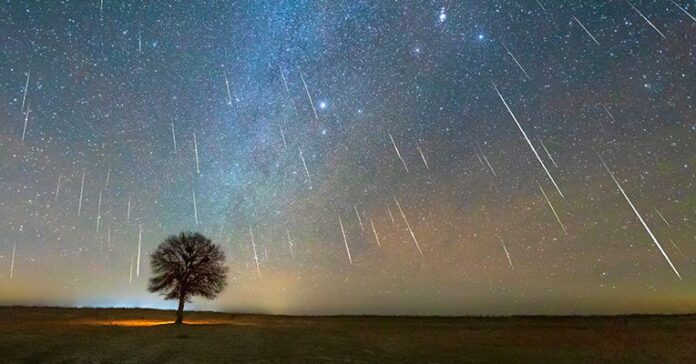If you want to get into stargazing in 2025, there’s no better place to start than viewing a meteor shower. Meteor showers, or shooting stars, happen when Earth’s orbital path crosses a path of debris left by a comet and that material burns up in the Earth’s atmosphere. Watching a meteor shower is one of the most accessible ways to engage with the night sky.
The next shower are the Leonids, which last throughout November and will peak around November 16-18. This is just one of nine major meteor showers that will grace skies in 2025, and details of when they will appear in the northern hemisphere are listed below—so mark your calendar for these.
How to Watch a Meteor Shower
You don’t need any special equipment to see a meteor shower—in fact, using devices like binoculars or telescopes actually prevents you from seeing meteors, because they travel too fast to be seen through the lenses of such equipment. All you need are your eyes, a dark sky with little to no moonlight, and a location that’s away from excess light, as moonlight and light pollution can wash out shooting stars.
Note that the moon appears (rises) and disappears (sets) in the night sky at different times depending on what time zone you are in. All moonrise/moonset times in this piece are for the eastern US. You can use tools like Time and Date’s moonrise/moonset calendar or this tool from the US Naval Observatory to check the precise moonrise/moonset times in your exact location.
You should allow your eyes about half an hour to adjust to the darkness. If you need to use a flashlight while outside, use one with red light instead of white to preserve your night vision.
Each meteor shower is named after its radiant, or the constellation that the shower appears to come from. A meteor shower’s radiant usually needs to be above the horizon before you can see the meteors. You don’t need to look directly at the radiant to see meteors; shooting stars will be visible throughout the entire sky once the radiant has risen.
If you need help finding a shower’s radiant, you can use an app like Stellarium, which can also tell you when the radiant will be above the horizon in your exact location. If you really want to maximize the number of meteors you’ll see, you should watch the sky when the shower’s radiant reaches its highest point in the sky. However, you don’t need to wait until the radiant is at its highest to enjoy the show—as long as the radiant is above the horizon, you should be able to see plenty of shooting stars.
The Next Big Meteor Shower
The Leonids are active from about November 3 to December 2. They have a sharp peak, producing the most meteors overnight from November 16 to November 17, according to the American Meteor Society. Other organizations, however, predict that this shower will peak from November 17 to November 18. During the Leonids’ peak, you can expect to see about 15 meteors per hour under dark skies.
Although the Leonids produce fewer meteors than many other of the major meteor showers, they are known for producing fast-moving, bright, fireball meteors.



